Related Research Articles

The Royal Australian Air Force (RAAF) is the principal aerial warfare force of Australia, a part of the Australian Defence Force (ADF) along with the Royal Australian Navy and the Australian Army. Constitutionally the Governor-General of Australia is the de jure Commander-in-Chief of the Australian Defence Force. The Royal Australian Air Force is commanded by the Chief of Air Force (CAF), who is subordinate to the Chief of the Defence Force (CDF). The CAF is also directly responsible to the Minister for Defence, with the Department of Defence administering the ADF and the Air Force.
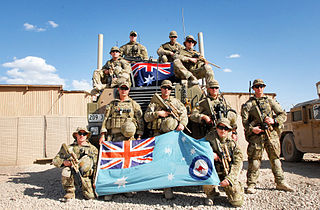
Airfield Defence Guards (ADG) are a mustering of the Royal Australian Air Force (RAAF) that are dedicated to the security and ground defence of airbases and other military aviation assets. Other duties include training other RAAF personnel, in skills such as the handling of small arms and infantry tactics. They do not, however, operate anti-aircraft artillery or missiles.

32 Battalion was an elite light infantry battalion of the South African Army founded in 1975, composed of black and white commissioned and enlisted personnel. It was disbanded on 26 March 1993.
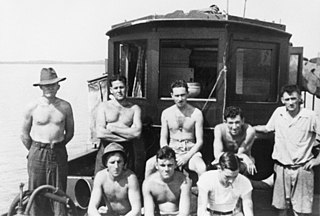
Z Special Unit was a joint Allied special forces unit formed during the Second World War to operate behind Japanese lines in South East Asia. Predominantly Australian, Z Special Unit was a specialist clandestine operation, direct action, long-range penetration, sabotage, and special reconnaissance unit that included British, Dutch, New Zealand, Timorese and Indonesian members, predominantly operating on Borneo and the islands of the former Dutch East Indies.
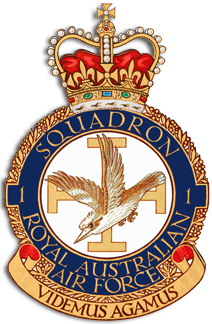
No. 1 Squadron is a Royal Australian Air Force (RAAF) squadron headquartered at RAAF Base Amberley, Queensland. It is controlled by No. 82 Wing, part of Air Combat Group, and is equipped with Boeing F/A-18F Super Hornet multi-role fighters.

No. 4 Squadron is a Royal Australian Air Force squadron composed of the air force special forces Combat Controllers, aircrew who operate the Pilatus PC-21 aircraft and instructors for the Australian Defence Force Joint Terminal Attack Controller (JTAC) course.
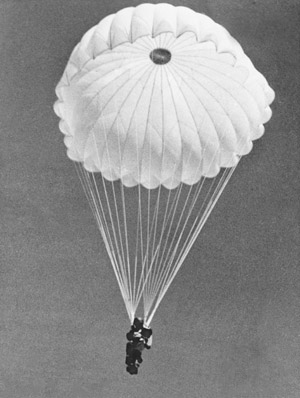
No. 200 Flight was a Royal Australian Air Force special duties flight of World War II. The flight was formed in February 1945 to support the Allied Intelligence Bureau (AIB) and saw action over Borneo and the Netherlands East Indies (NEI) from March that year until the end of the war in August. No. 200 Flight was disbanded in December 1945.

The 3rd Reconnaissance Battalion conducts amphibious and ground reconnaissance in support of the 3rd Marine Division and Marine Forces Pacific (MarForPac), operating in the commander's areas of influence. The battalion is based out of Camp Schwab, a satellite base of Marine Corps Base Camp Smedley D. Butler. It is geographically located on the Okinawa Prefecture in Japan.

No. 82 Wing is the strike and reconnaissance wing of the Royal Australian Air Force (RAAF). It is headquartered at RAAF Base Amberley, Queensland. Coming under the control of Air Combat Group, the wing operates F/A-18F Super Hornet multirole fighters, EA-18G Growler electronic warfare aircraft, and Pilatus PC-21 forward air control aircraft. Its units include Nos. 1 and 6 Squadrons, operating the Super Hornet and Growler respectively, as well as No. 4 Squadron, operating the PC-21.
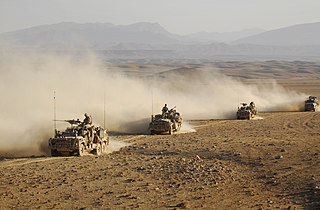
The special forces of the Australian Defence Force are units of Special Operations Command and associated units of the Royal Australian Navy and the Royal Australian Air Force that conduct and or support special operations to advance and protect the national security of the Commonwealth of Australia. The special forces of Australia have a lineage to a variety of units raised in the Second World War such as the Independent and Commando Companies, Z Special Unit, Navy Beach Commandos, and the Coastwatchers. Australian special forces have most recently been deployed to Iraq in Operation Okra as the Special Operations Task Group, as the Special Operations Task Group in Afghanistan, in Afghanistan in support of the Australian Secret Intelligence Service and regularly for counter-terrorism pre-deploy to locations of major domestic events throughout Australia in readiness to support law enforcement such as the 2014 G20 Brisbane summit.

No. 466 Squadron RAAF was a Royal Australian Air Force (RAAF) bomber squadron during World War II. Formed in the United Kingdom in late 1942, the squadron undertook combat operations in Europe until the end of the war, flying heavy bomber aircraft. Following the conclusion of hostilities with Germany, the squadron began retraining to undertake operations in the Pacific against the Japanese, but the war came to an end before it left the UK. In late 1945, the squadron was disbanded.
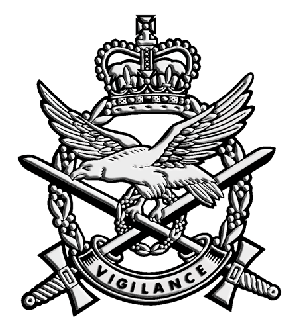
The Australian Army Aviation (AAAvn) is an administrative corps of the Australian Army. It was formed on 1 July 1968. The motto of the Australian Army Aviation corps is Vigilance.
The Nursing Service Cross (NSC) is a conspicuous service decoration of the Australian honours and awards system, instituted by Letters Patent on 18 October 1989.

101 Battalion(pronounced as one-o-one Battalion) was a quick-reaction unit of the South West African Territorial Force, composed of black and white commissioned and enlisted personnel.
The Highest Honour is a 1982 Australian/Japanese co-production about Operation Jaywick and Operation Rimau by Z Special Unit during World War II.
No. 421 (Reconnaissance) Flight was a specialist RAF fighter flight created on 21 September 1940 to patrol the Channel and provide early warning of the types of incoming Luftwaffe raids from occupied France. It was later expanded to full squadron strength and renumbered as No. 91 Squadron on 11 January 1941. Its role led to its pilots being nicknamed "Jim Crows".
Operation Lagarto was an Australian military operation in Timor during World War II in 1943. It was run by the Services Reconnaissance Department. The Naval component of the mission was named Operation Mosquito. The operation was ambushed and captured. Japanese intelligence used information from the mission to lure other Australian commandos to Timor where they were captured and killed, notably Operation Cobra (Timor), Operation Sunlag and Operation Suncob.
The 1916 Birthday Honours were appointments by King George V to various orders and honours to reward and highlight good works by citizens of the British Empire. The appointments were made to celebrate the official birthday of The King, and were published in The London Gazette and in The Times on 3 June 1916.

Operation Binatang was an Australian covert operation conducted by the Services Reconnaissance Department (SRD) during World War II. An agent of Z Special Unit was to be landed on the north coast of Java to recruit more men who would give active assistance to the allied cause. The operation was conceived in January 1944 but owing to the shortage of available submarines and the priority of Operation Hornbill it was delayed. When Hornbill was aborted arrangements were made for the mission to commence in February 1945.